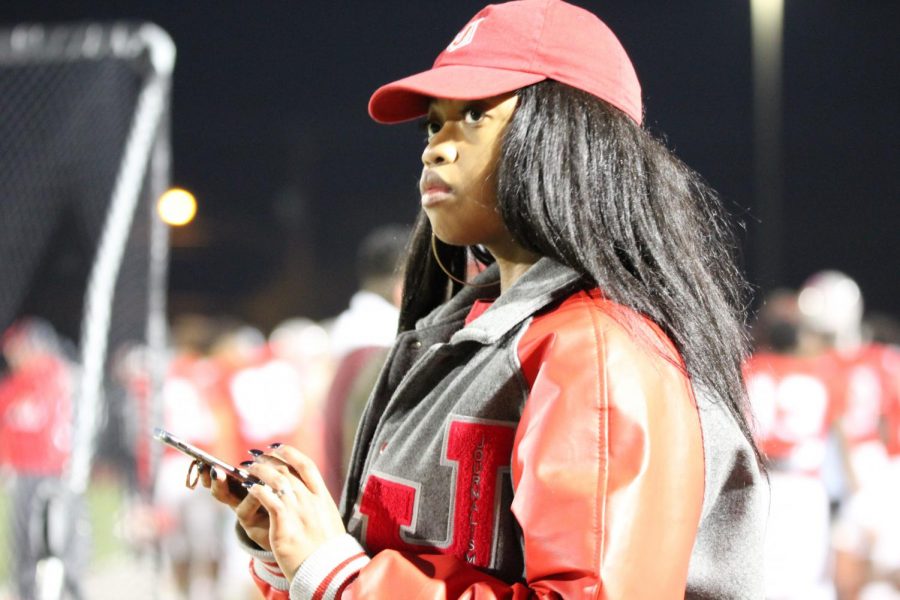Breaking boundaries in high school sports journalism
Photo By: Leslie Martinez
Sports editor Raven Gatson looks to the scoreboard to live tweet the score onto The Fuel’s Twitter.
Since I was a young girl, a typical start to my day has always incorporated listening to ESPN whenever it was left on in the background or intentionally watched during breakfast. Over time, it has become a daily routine of mine to take in sports-related news and listen to sports-related podcasts.
However, over the years, I have noticed a looming consistency with these daily broadcasts and reporting of sports on all levels: where are the female reporters?
For some, the question can easily be answered and pointed to sports media figures such as Doris Burke, Jemele Hill, and Rachel Nichols. Yet, even these names are not completely prominent and could possibly be unknown to those who aren’t active sports listeners. Within the realm of football, this reality is even more jarring.
This year, the NFL was graced with the first ever all-female reporting team that included Hannah Storm and Andrea Kremer. And yet, the engagement they receive with players and coaches appears to be nominal when compared to the male reporters that have been dominating the field for years.
As a black female journalist myself, there are potential for challenges when reporting for various reasons. However, as I’ve come to understand, reporting in the area of sports the way I do leave nearly no female journalists to look up to. On top of that, not only is it rare to see a black female journalist, it is rarer to see black female sports journalists.
From a young age, I was raised on a love of sports, with my understanding of the game of football being nurtured by my mom. I remember the vivid descriptions of football legends and how she would point out the prominent players of each team. She then went on to explain each position to me both on the offensive and defensive side. From there, I would build my knowledge further by listening to various commentators, but none of them would be women.
Now, sideline reporters for football have been largely female with names such as Holly Rowe, Erin Andrews, and Jeannine Edwards instantly coming to mind. However, the troubling issue to me is the lack of women being able to analyze and commentate at the same level their male counterparts do.
Analysis for female reporters has been left for morning scheduled broadcasts. And if given the opportunity, they are forced to stuff their analysis into a quick one minute run down. These rundowns are also pushed by previous perspectives and their own opinions are barely inputted. On the other hand, male reporters are seemingly given hours to properly talk about each team thoroughly and engage with their own opinions.
Reporting football the way I do is still quite foreign to my environment. While it is not negatively received, it’s stereotypically uncommon for girls to understand the game of football and have a knowledge of the way special teams and coaching apply to specific plays. Even when approaching interviews with players, I still get curious looks of how I acquired this information or know so much about the game.
It is simple – I understand football the same way men some men do.
Yet, if my opinions were to be received that simply on a larger scale, in the mainstream sports media, more women would be in positions to approach reporting of the game of football and other sports in a different way.
Not simply on the sidelines asking insignificant questions feed to them by their networks or facilitating conversation for a bunch of men on Sunday Night Football. Instead, women will be heading the conversations about the season and commentating/critiquing football teams the same way their male counterparts are able to do without backlash.
Reporting sports and football is something I love to do, but the issue still stands. There is simply not enough of me within this line of work. My hope is for ESPN and other networks begin opening more doors for female sports journalist and allow them to expand their opinions of the game on a deeper level.

